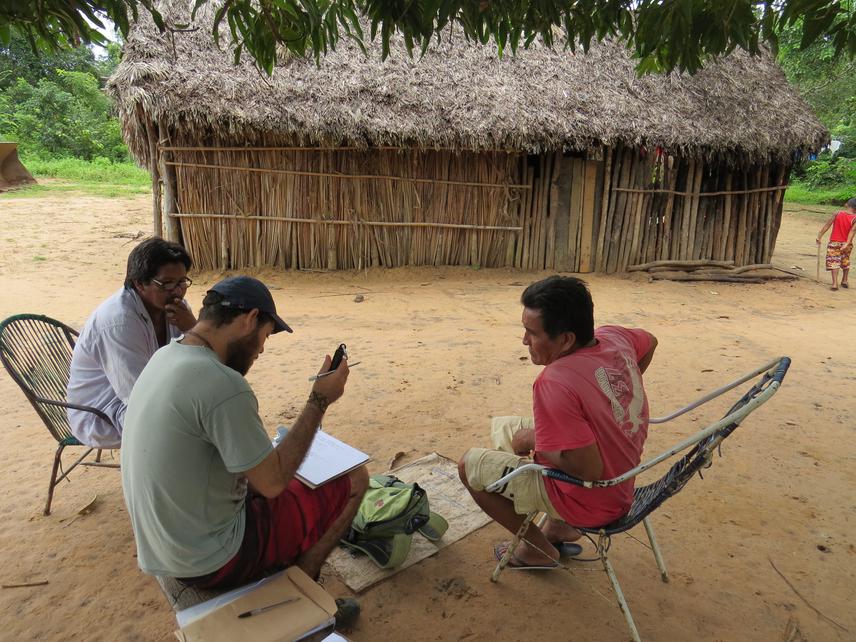Milton José de Paula
This project aims to identify the game fauna and its ethnographic importance, and sustainability appraisal of hunting in Xerente Indigenous Land, Brazilian Cerrado.

Training of Xerente hunters for the hunting monitoring and delivery of the hunting daily.
The hunting activity is present in human populations living in the tropical forests around the world. For indigenous groups, hunting provides an important source of animal protein for maintenance of these groups beyond also have great importance in their culture. However, indigenous hunting of course exerts a certain cost on biodiversity conservation through local reduction of certain animal populations. In this way, maintaining a healthy indigenous society capable of sustaining itself through hunting and agriculture is a far more attractive possibility for biodiversity conservation when faced with the typical development strategies for the Brazilian Cerrado region: logging, mining, cattle ranching and commercial agriculture.
The goals of this project are to quantify consumption of game, estimate game hunting, sustainability appraisal of hunting and identify the ethnographic aspects of this game fauna. Data on the density of game animals and the real impact of local hunting practices made on species will be collected and analyzed through the model of sustainability. This project will also build the first database on hunting activity through the hunt monitoring of Xerente Indians. The ethnographic aspects (social, symbolic, esthetic and cosmological importance) will be collected through semi-structured interviews.
Thus, this project will provide solid information to better develop a game animal management plan in conjunction with the local indigenous population, respecting their cultural aspects. Also, this will contribute to understand the exploitation of wildlife in Cerrado, the most threatened biome currently in Brazil, and will provide assessment of possibilities and limitations of conservation of well-preserved extensions of the Brazilian Cerrado Biome embodied within the limits of indigenous lands. Reiterating the importance of indigenous land for the Cerrado biome, the highly threatened situation of this biome and the relative lack of studies on large vertebrate animals and hunting practices, the study will have a much broader significance beyond its applicability to the specific local context.